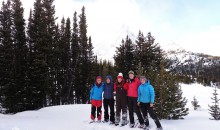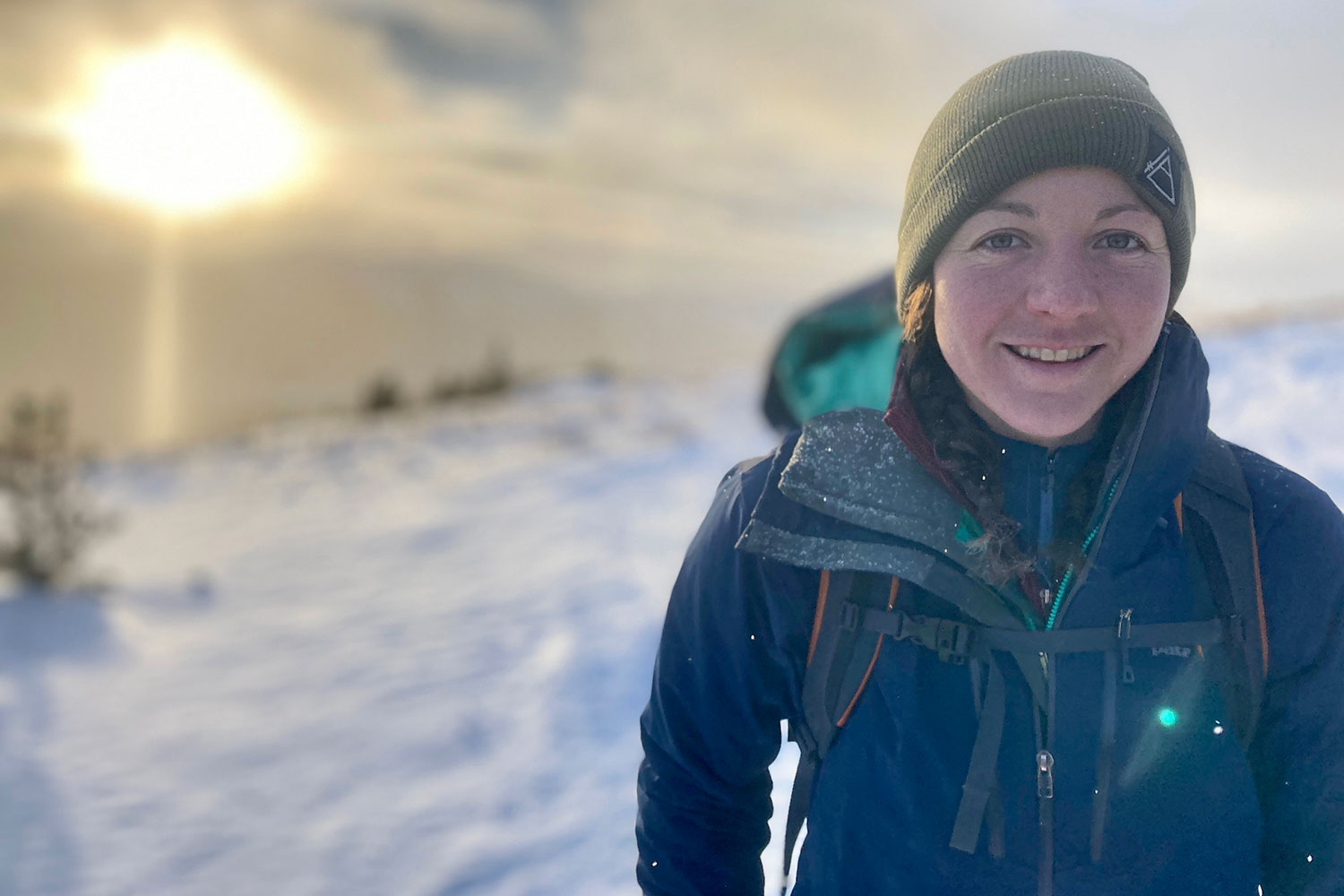For 2019’s Women in Science Day, wildlife biologist Siobhan Darlington shares how she got into science, what the job is like, and what advice she would give other women considering a similar career.

By Siobhan Darlington
I didn’t excel at biology in high school but I knew that I was interested in making a difference in the environment and I was interested in animals.
I did a double major in Biology and Environmental Sustainability, & Society at Dalhousie University. I took as many elective sciences courses as possible from geology to astronomy and climate change studies. I did a lot of research in my undergrad to learn about what kinds of jobs are out there for biologists. I took courses on GIS and statistics and I eventually got into habitat modeling for birds in my 4th year of undergrad. This led to my current interest in landscape ecology. My honours’ supervisor told me that research and fieldwork aren’t for everybody and that sort of put me off a little bit. I thought, “Oh, she’s hinting that I’m not cut out for it.” I decided to try it anyway and I was surprised that it really was for me and I liked it even more than I thought I would!
Some people don’t discover that this is what they want until much later, and that’s ok too. I have lots of friends who took totally different paths. One person I know did a degree in English and now they’re doing a PhD in ecology. Another was a police officer for 20 years before becoming a field technician. You can come from a different background and find your way into science later. And I have friends who are interested in wildlife conservation but from a policy-based approach. There are a lot of elements that go into protecting species like the business perspective, fundraising, and campaigns. So even if you think, “well maybe I’m not really keen on doing research and writing papers,” there’s bound to be another aspect of conservation that you are good at.

Getting your first job can be really tough if you’ve never done fieldwork before. I didn’t do fieldwork until after my undergrad, so for a time I had a job screwing in lightbulbs for an energy efficiency program. I had to volunteer a lot of my time to get my foot in the door, which not everyone can afford. You hear about people going and saving sea turtles in the Galapagos or something but that’s not feasible for everyone, and it wasn’t feasible for me.
So my advice is if you’re looking for field experience, volunteer somewhere where they cover your food and accommodations, and allow yourself the time to learn. Dedicate a month at least and that can go a long way. I found volunteering for a few months in different places in my home province has given me a lot of skills. I waited until I could afford to do it, but do it early if you can—I wish I had done it in my undergrad.

My first science job was as a conservation volunteer coordinator for the Nature Conservancy Canada, organizing trailblazers, and beach cleanup events with the local communities in New Brunswick and PEI. I later did more research-based positions working for other NGOs and universities doing nest monitoring and bird banding.
In the summers I did bird banding we’d hike for long days, nearly every day for weeks in the scorching heat, carrying all of our gear. I spent two summers targeting vagrant songbirds with Acadia University in Nova Scotia, one spring targeting nightjars in Ontario, and a full season as a bander at Rocky Point Bird Observatory on Vancouver Island. Sometimes you have to be willing to move to get opportunities for field work. And be prepared for a variety of environmental conditions. When I worked in Ontario, I was covered head to toe in bug netting in over 35 Celsius heat. So get used to sweating and drinking a lot of water!

My Master’s work was on white-tailed deer in northeastern Alberta’s oil and gas country (similar to what I do here). With large mammals, usually the people who do the analysis are not the same people who do the fieldwork because it takes years to collect enough data. So I didn’t actually get to capture and collar the deer that I did my Master’s on, but I did capture other deer in Victoria for the Urban Wildlife Stewardship Society. When I had the opportunity to come work for fRI’s Caribou Program on a project similar to my Master’s work, I quickly finished up my thesis and moved to Hinton just two days after defending my Master’s thesis. These opportunities are a rare find and I didn’t hesitate!
Here at fRI I’m modeling caribou response to mountain-pine beetle infestation and assisting with white-tailed deer capture for a deer and cutblock study. Doing winter field work with fRI is a new experience for me. A huge part of the job is staying warm and hot pockets are now my best friends. It turns out that catching deer is a lot harder than you think; there’s a lot of trial and error. There’s a lot to learn and in over a month of capture, we’ve caught four deer but are hoping to get 20. We had three in the span of 24 hours, so a lot of it is being patient. Taking your time to learn all the steps you need to actually get deer to go into your traps. It’s a huge learning curve.

In Victoria we were working on an urban study on black-tailed deer, so we were basically free-ranging deer on people’s lawns. A huge aspect of that project was managing the public who could watch us process a deer. We weren’t using traps—we could drive around, spot a deer, and just go for it. Here in the boreal forest, you can’t really drive around and target a deer. We have to bait them patiently, put cameras up, set the traps, and visit them often. And then have an alarm system ready in case a deer goes in. The distance we have to travel is greater. In Victoria we would go out and spend the day free ranging deer and then at the end of the day, we’d go home and have a good night’s sleep. That’s that. Here, if we catch a deer during the night it could take a few hours before we can get a team together to go out and process it. When it’s too cold we have been keeping our traps locked open for the deer’s safety – and our own!
Field work sounds like a lot of fun but sometimes it can quite challenging both physically, and mentally. The biggest challenges that I’ve encountered aren’t really the logistics of fieldwork because you can usually roll with the punches and improvise if needed. It’s managing different personalities and communication strategies. Making sure everyone is working together towards the objectives – and getting along – can be the hardest part of the job. Remember, you’re often working all day with the same team, and living with them afterward. Fortunately, I’ve made some lifelong friends doing field work and I also met my partner doing bird work together.

I’ll pass on some advice that my master’s supervisor gave me about applying to jobs: be confident when you apply to things even if you don’t have all the qualifications. You can convince someone that you are capable of learning how to do it if you believe in yourself. Don’t give up before you have even tried.
My advice is to put yourself out there. Get to know other people in your field. If you’re remotely interested in it, try it. If you’re in undergrad, look for broader courses and interdisciplinary programs. You just don’t know until you start to do some digging. I didn’t know people could wrestle deer or hold cute birds all day long and get paid for it. It’s hard to know until you try.
Learn more about Siobhan’s research at her website.









